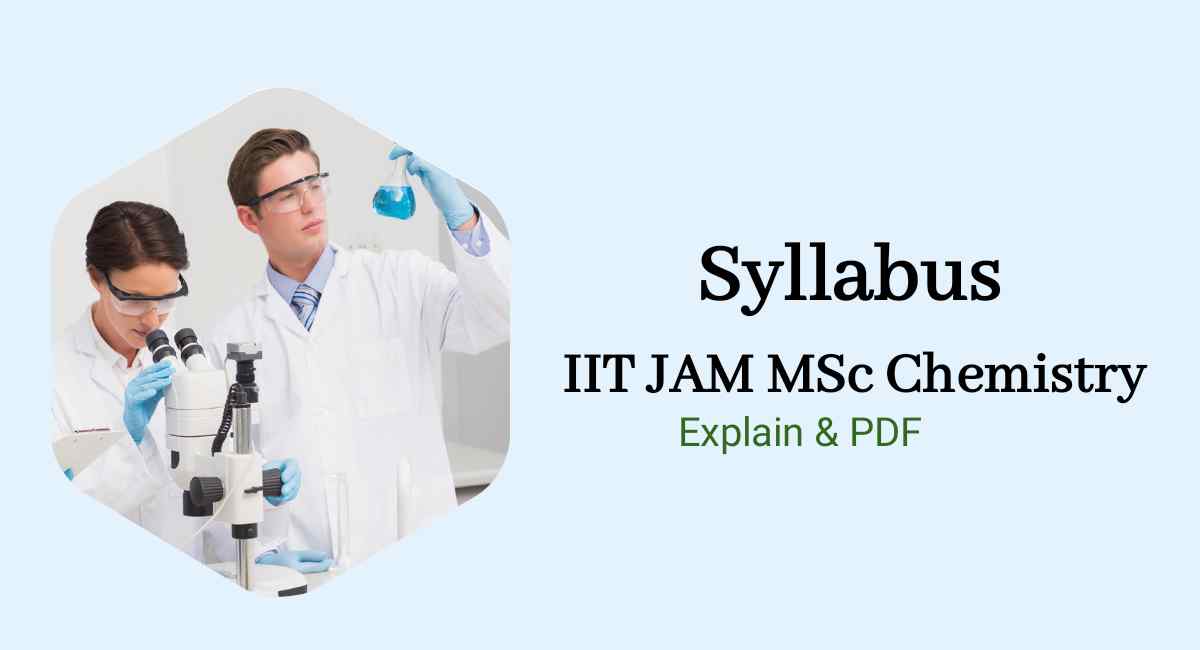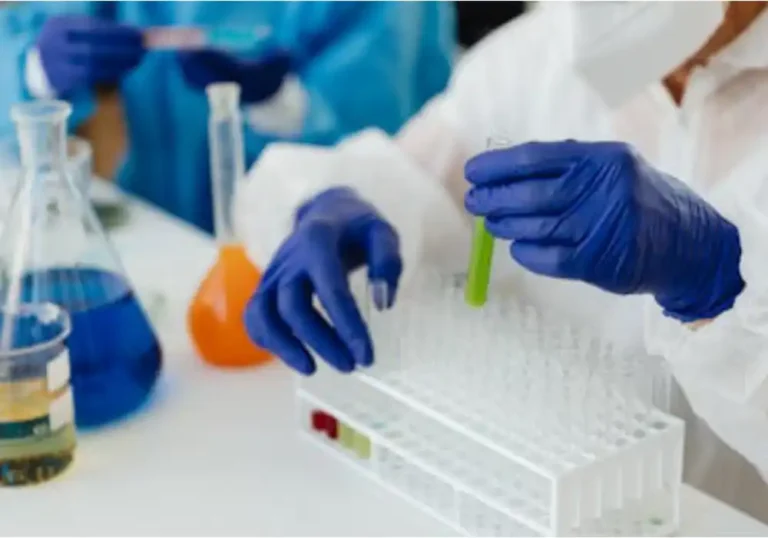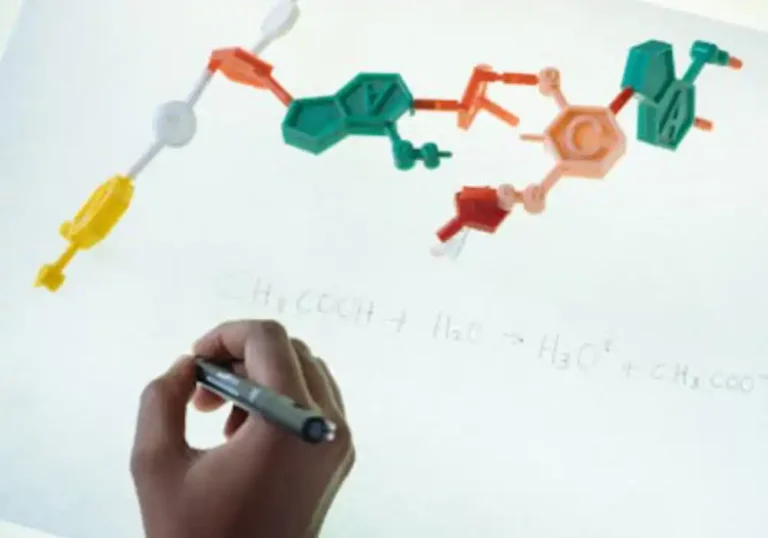IIT JAM Chemistry Syllabus 2025: PDF Download
The IIT JAM Chemistry syllabus for 2025 is a comprehensive framework designed to assess candidates’ understanding of key concepts in various domains of chemistry.

This syllabus encompasses Physical Chemistry, Organic Chemistry, and Inorganic Chemistry, ensuring a well-rounded evaluation of candidates’ knowledge and proficiency.
Topics include atomic and molecular structure, thermodynamics, chemical kinetics, organic reaction mechanisms, coordination chemistry, and more.
The syllabus is crafted to reflect the evolving landscape of the field, integrating foundational principles with contemporary advancements.
By covering a diverse range of subjects, the IIT JAM Chemistry syllabus aims to test candidates’ analytical and problem-solving skills, providing a robust assessment platform for those aspiring to pursue advanced studies in chemistry at top-tier institutions.
IIT JAM Chemistry Syllabus 2025
Physical Chemistry Syllabus:
- Atomic and Molecular Structure:
- Planck’s black body radiation, Photoelectric effect
- Bohr’s theory, de Broglie postulate, Heisenberg’s Uncertainty Principle
- Schrödinger’s wave equation, postulates of quantum mechanics
- Normalized and orthogonal wave functions, complex conjugate, significance of Ѱ2
- Operators; Particle in onedimension box; Radial and angular wave functions for hydrogen atom
- Radial probability distribution; Finding maxima of distribution functions; Energy spectrum of hydrogen atom
- Shapes of s, p, d, and f orbitals; Pauli’s Exclusion Principle; Hund’s rule of maximum multiplicity
- Gaseous State:
- Kinetic molecular model of a gas
- Collision frequency, collision diameter, mean free path, and viscosity of gases
- MaxwellBoltzmann distribution, law of equipartition of energy
- Ideal gases, deviations from ideal gas behavior
- Van der Waals equation of state; Critical state, law of corresponding states
- Liquid State:
- Physical properties of liquids, vapor pressure, surface tension, and coefficient of viscosity
- Effect of concentration of solutes on surface tension and viscosity
- Effect of temperature on viscosity of liquids
- Solid State:
- Unit Cells, Miller indices, crystal systems, and Bravais Lattices
- Xray diffraction, Bragg’s Law, Structure of NaCl, CsCl, KCl, diamond, and graphite
- Close packing in metals and metal compounds, semiconductors, insulators
- Defects in crystals, lattice energy, isomorphism, heat capacity of solids
- Chemical Thermodynamics:
- Mathematical treatment: Exact and inexact differentials, partial derivatives, Euler’s reciprocity, cyclic rule
- Reversible and irreversible processes; Laws of thermodynamics, thermochemistry
- Thermodynamic functions: enthalpy, entropy, and Gibbs free energy
- Partial molar quantities, dependence of thermodynamic parameters on composition
- Gibbs Duhem equation, chemical potential, and its applications
- Chemical and Phase Equilibria:
- Law of mass action; Ionic equilibria in solutions; pH and buffer solutions
- Salt hydrolysis; Solubility and solubility product; Acid – base titration curves
- Indicators; Dilute solutions; Raoult’s and Henry’s Laws; Colligative properties
- Gibbs phase rule; Phase equilibria; single and twocomponent phase diagrams
- Electrochemistry:
- Conductivity, equivalent and molar conductivity; Kohlrausch law
- DebyeHückelOnsager equation; Ionic velocities, mobilities, transference numbers
- Applications of conductance measurement; Quantitative aspects of Faraday’s laws of electrolysis
- Electromotive force of a cell, Nernst equation; Standard electrode potential, Electrochemical series
- Concentration cells with and without transference; Applications of EMF measurements
- Chemical Kinetics:
- Order and molecularity of a reaction
- Differential and integrated form of rate expressions
- Kinetics of opposing, parallel, and consecutive reactions
- Steadystate approximation in reaction mechanisms; Chain reactions
- Temperature dependence of reaction rates, Arrhenius equation; Activation energy; Collision theory
- Types of catalysts, specificity and selectivity, mechanisms of catalyzed reactions
- Enzyme catalysis (MichaelisMenten mechanism, Double reciprocal plot), Acidbase catalysis
- Adsorption:
- Gibbs adsorption equation; Adsorption isotherm; Types of adsorption
- Surface area of adsorbents; Surface films on liquids
- Spectroscopy:
- BeerLambert’s law; Fundamental concepts of rotational, vibrational, electronic, and magnetic resonance spectroscopy
Organic Chemistry Syllabus:
- Basic Concepts in Organic Chemistry and Stereochemistry:
- Electronic effects (resonance, inductive, hyperconjugation) and steric effects
- Optical isomerism in compounds with and without stereocenters; Conformation of acyclic systems
- Conformation of cyclic systems, substituted cyclohexanes, and polycyclic systems
- Organic Reaction Mechanism and Synthetic Applications:
- Chemistry of reactive intermediates
- Nucleophilic substitution, elimination reactions and mechanisms
- Oxidation and reduction reactions in organic chemistry
- Organometallic reagents in organic synthesis
- DielsAlder, electrocyclic and sigmatropic reactions
- Functional group interconversions and structural problems using chemical reactions
- Qualitative Organic Analysis:
- Identification of functional groups by chemical tests
- Elementary UV, IR and 1H NMR spectroscopic techniques for structural elucidation
- Natural Products Chemistry:
- Chemistry of alkaloids, steroids, terpenes, carbohydrates, amino acids, peptides, and nucleic acids
- Aromatic and Heterocyclic Chemistry:
- Monocyclic, bicyclic and tricyclic aromatic hydrocarbons
- Monocyclic compounds with one hetero atom: synthesis, reactivity, and properties
- Electrophilic and nucleophilic aromatic substitution reactions.
Inorganic Chemistry Syllabus:
- Periodic Table:
- Periodic classification of elements
- Aufbau’s principle, periodicity
- Variations of orbital energy, effective nuclear charge, atomic, covalent, and ionic radii
- Ionization enthalpy, electron gain enthalpy, and electronegativity with atomic number
- Extractions of Metals:
- General methods of isolation and purification of elements
- Principles and applications of Ellingham diagram
- Chemical Bonding and shapes of molecules:
- Ionic bond, Covalent bond
- Hybridization, molecular orbital theory, molecular orbital diagrams
- Multiple bonding and bond lengths; van der Waals forces, iondipole forces, dipoledipole interactions
- Main Group Elements (s and p blocks):
- Reactions of alkali and alkaline earth metals with oxygen, hydrogen, and water
- Gradation in properties of main group element in a group; Inert pair effect
- Synthesis, structure and properties of diborane, ammonia, silane, phosphine, and hydrogen sulphide
- Transition Metals (d block):
- Characteristics of dblock elements
- Oxide, hydroxide, and salts of firstrow metals; Coordination complexes
- VB, MO, and crystal field theoretical approaches for structure, color, and magnetic properties of metal complexes
- Organometallic compounds with metalligand single and multiple bonds;
- Homogeneous catalysis
- Bioinorganic Chemistry:
- Essentials and trace elements of life
- Basic reactions in biological systems and the role of metal ions
- Instrumental Methods of Analysis:
- Basic principles; Instrumentations and simple applications of conductometry, potentiometry, and UVvis spectrophotometry
- Analyses of water, air, and soil samples
- Analytical Chemistry:
- Principles of qualitative and quantitative analysis
- Acidbase, oxidationreduction, and complexometric titrations using EDTA
- Precipitation reactions; Use and types of indicators
- Use of organic reagents in inorganic analysis; Radioactivity, nuclear reactions, applications of isotopes
- Mathematical treatment in error analysis, elementary statistics, and probability theory.
| Download PDF Syllabus |
Conclusion Points
In conclusion, the IIT JAM Chemistry Syllabus for 2025 provides a comprehensive and rigorous outline of the essential principles and advanced concepts in the diverse realms of chemistry.
This syllabus not only reflects the academic excellence expected by prestigious institutions like the IITs but also serves as a benchmark for aspiring students in the field of chemistry.
The inclusion of topics spanning Physical, Organic, and Inorganic Chemistry ensures a holistic evaluation of candidates’ knowledge and aptitude.
Aspirants are encouraged to delve deep into the intricacies of the syllabus, mastering the theoretical foundations and practical applications, in order to navigate the challenges and excel in the Joint Admission Test for M.Sc. in Chemistry.
FAQs
1. Question: What are the key topics in IIT JAM Chemistry Syllabus 2025?
Answer: The IIT JAM Chemistry syllabus covers Physical Chemistry (atomic structure, thermodynamics, kinetics), Organic Chemistry (reaction mechanisms, stereochemistry, natural products), and Inorganic Chemistry (periodic table, metal extractions, bioinorganic chemistry).
These topics ensure a well-rounded assessment of your chemistry knowledge.
2. Question: How can I prepare for IIT JAM Chemistry?
Answer: Focus on mastering the fundamentals of Physical, Organic, and Inorganic Chemistry. Make a formula chart, practice sample papers, and revise core concepts.
Regularly solve numerical problems and work on understanding reaction mechanisms for better grasp.
3. Question: What is the importance of organic chemistry in IIT JAM?
Answer: Organic Chemistry is crucial as it covers reaction mechanisms, stereochemistry, and functional group interconversions.
Mastering these concepts will help you score well, especially since many questions focus on reaction pathways and organic synthesis.
4. Question: How can I tackle inorganic chemistry for IIT JAM?
Answer: Inorganic Chemistry involves understanding the periodic table, chemical bonding, and transition metal complexes. Focus on key topics like hybridization, coordination chemistry, and bioinorganic chemistry.
Practice identifying structures and properties of metal complexes for better clarity.
5. Question: What are the important chapters in Physical Chemistry for IIT JAM?
Answer: Key chapters include Atomic and Molecular Structure, Chemical Thermodynamics, Electrochemistry, and Chemical Kinetics.
Understanding concepts like Gibbs free energy, Nernst equation, and Arrhenius equation will help you solve complex problems efficiently.





